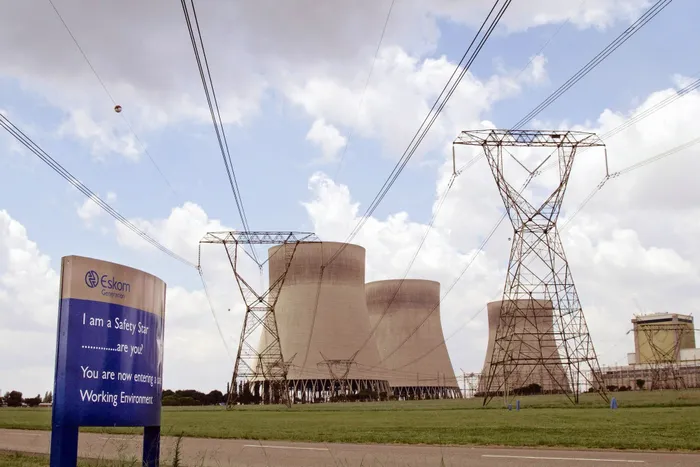#Budget2021: R56 bn to stabilise Eskom

The National Treasury yesterday said that it had allocated R31.7 billion to Eskom for 2021/22, and provided R56bn for 2020/21 to stabilise Eskom while government restructured it into three separate entities. Photo: Bloomberg
PRETORIA - ESKOM is set to finalise its restructuring into three separate units by the end of the year.
The National Treasury yesterday said that it had allocated R31.7 billion to Eskom for 2021/22, and provided R56bn for 2020/21 subject to compliance with the conditions of the Special Appropriation Act of 2019.
The Treasury said that the allocation was meant to stabilise Eskom while government restructured it into three separate entities of generation, transmission and distribution.
“Government and Eskom have agreed on an implementation plan and timelines for this separation: by December 2021, the transmission division will be legally separated, and separation of the generation and distribution divisions will be completed by December 2022,” the Treasury said.
The Treasury said divisional boards had been appointed and were accountable for strategy, business performance and functional compliance.
The directors-general of the National Treasury, the Department of Mineral Resources and Energy and the Department of Public Enterprises, and Eskom's chief executive would oversee the implementation plan.
“Eskom remains dependent on government support and continues to use debt to pay operational costs. It does not generate sufficient cash to meet its commitments, which include high levels of debt and debt-service costs,” the Treasury said.
“In addition, the utility faces serious operational challenges and is unable to meet the country's electricity demand. Delayed and inadequate maintenance, alongside faults detected in major new units, have contributed to deteriorating fleet performance.”
The Treasury said government's immediate focus was to stabilise Eskom's operations and improve energy availability, while implementing the 2019 roadmap released by the Department of Public Enterprises.
“Eskom is exploring short-term energy purchases to reduce load shedding and offset planned maintenance outages,” said the National Treasury.
“The Independent Power Producer (IPP) Office within the Department of Mineral Resources and Energy is evaluating bids for the procurement of 2 000MW of emergency power from IPPs to compensate for Eskom's capacity shortfall. In addition, the department will soon initiate a fifth bid window to buy 2 600MW of wind and solar power from renewable energy IPPs.”
The total amount for approved guarantees to state-owned entities was expected to increase by R96.2bn to R581bn by the end of March, with associated exposure estimated to decrease by R3.4bn to R410.3bn.
In 2020, load-shedding reached the highest levels since 2015, with a cumulative 52 days of Eskom power cuts.
dineo.faku@inl.co.za
BUSINESS REPORT